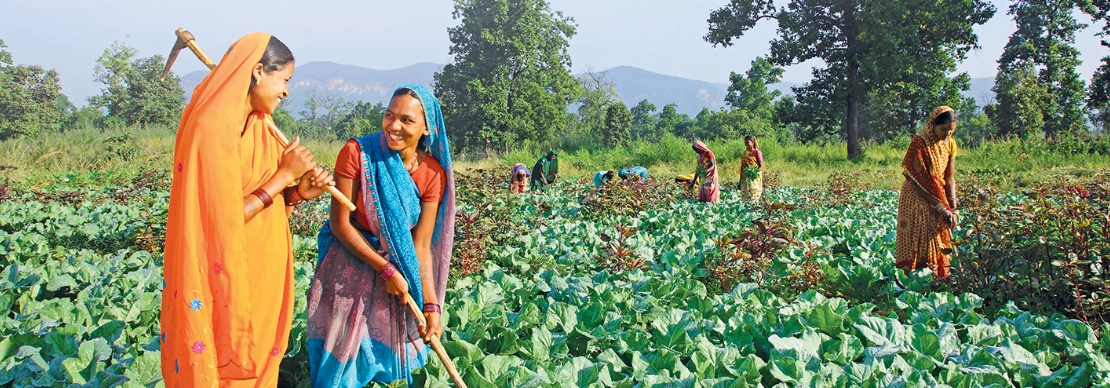
To achieve Net Zero carbon emissions across Scope 1 and 2 by 2050
Low-carbon transition introduces regulatory, climate, and technological challenges, with potential asset and market value impacts.
Low-carbon shift offers new markets, cleaner technology, and community benefits.
Vedanta Limited is resolutely committed to achieving Net Zero carbon emissions for our Scope 1 and 2 emissions through a multi-pronged strategy. This involves the proactive adoption of energy-efficient processes across our operations, a significant enhancement of renewable energy integration, a strategic transition to lower-carbon fuels, and the responsible use of carbon offsets for any residual emissions. This strategic pathway is thoughtfully aligned with India's "Panchamrit" commitments, announced at COP26, which articulate five key climate pledges, including the ambitious national goals of reaching 500 GW of non-fossil energy capacity by 2030 and achieving net-zero emissions by 2070. By aligning our near-term actions with these national objectives, Vedanta demonstrates its commitment to contributing meaningfully to India's broader climate goals and its transition towards a sustainable future.
Increasing the share of renewable energy
Switching to low-carbon or zero-carbon fuels
Improving the energy efficiency of our operation
Offsetting residual emissions
Vedanta's renewable energy roadmap has made notable advancements since FY 2020-21. We have supported renewable energy projects including 800 MW of solar and 1,106 MW of hybrid renewable power, and are on‑track towards our commitment to use 2.5 GW of round-the-clock equivalent non-fossil fuel-based electricity by 2030. By next year, we anticipate an additional 300 MW of RE power coming online across our operations.
The company has implemented a shadow carbon price of US$ 15 per mtCO₂e for all the projects with budgets over ₹ 50 million in order to drive low-carbon decisions in our project implementation.
Vedanta continues to assess value-chain emissions in business operations for 12 out of 15 categories based on GHG protocol.
Not only do we measure our performance in overall reduction of carbon footprint but have incorporated it as function in executive compensation structure, annual review processes which reflects the integration of climate-related parameters through policies and strategic planning.
Board ESG Committee, Group Executive Committee and ESG Management Committee are responsible for developing Vedanta’s strategies, and execution of projects.
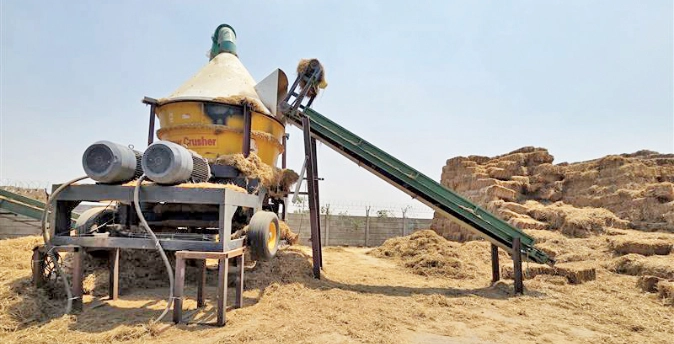
Climate change and energy transition
TSPL
The biomass co-firing initiative at TSPL marks a significant step in Vedanta’s decarbonisation journey. By replacing a portion of coal with biomass, the plant can potentially reduce annual CO₂ emissions by over 7,60,000 tonnes, assuming full utilisation of biomass in place of coal.
The project integrates biomass co-firing at Talwandi Sabo Power Limited (TSPL) by blending biomass pellets with coal in the thermal power generation process. In FY 2023‑24, TSPL procured 26,037 metric tonnes of biomass, equivalent to 4,000 Kcal/kg in energy. The ultimate goal is to replace 5% of annual coal usage with biomass.
This initiative is crucial for:
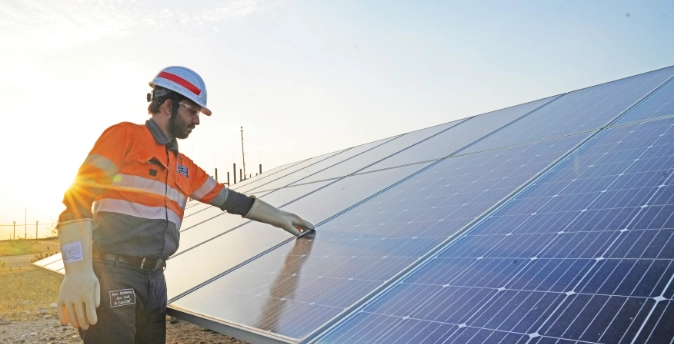
Climate change and energy transition
HZL (completion year FY 2025-26)
We expect to supply about 70% of HZL’s total energy needs, significantly lowering its carbon footprint. This marks a shift from fossil-fuel-based energy to renewable sources like wind and solar. With the help of advanced energy storage, the project ensures a stable and round-the-clock (RTC) energy supply.
Vedanta plans to achieve Net Water Positivity by 2030 across all business units
Physical, Regulatory and Reputational risks related to water usage for operational purposes
Greater availability of clean water and community engagement through water stewardship activities
Access to clean water is a critical global challenge, deeply affecting economic activity and societal well-being. With many Vedanta operations situated in water-stressed regions, the company has adopted a comprehensive strategy to address water scarcity, focussing on efficient water use, water security for surrounding communities, and sustainable stewardship.
Water is recognised as a shared public resource, and Vedanta actively collaborates with adjacent communities, supporting their water needs and reinforcing its social licence to operate. The large-scale operations, particularly in mining, require judicious water management to prevent depletion or contamination of local freshwater resources. To address these risks, Vedanta employs advanced technologies like zero liquid discharge systems and closed-loop recycling, ensuring that industrial wastewater is treated and reused efficiently.
Vedanta has renovated 81 community ponds, constructed new farm ponds, and implemented rainwater harvesting and groundwater recharge projects, directly benefiting local populations and improving agricultural productivity, especially in water-stressed regions like Rajasthan and Odisha.
Vedanta was conferred with the CII National Excellence Award for ‘managing water within the fence’ for its captive power plant at Zawar and Dariba smelting complex.
These achievements underscore our leadership in water stewardship and its commitment to balancing industrial growth with ecological and community well-being.
To achieve a water positivity ratio of >1 by 2030.
Vedanta ensures continuous and ongoing monitoring of KPIs such as absolute freshwater consumption, water recycling rate and water credit amount. Progress towards these KPIs is monitored via monthly CoP and ESG ExCo meetings and half yearly ESG Board Committee meetings.
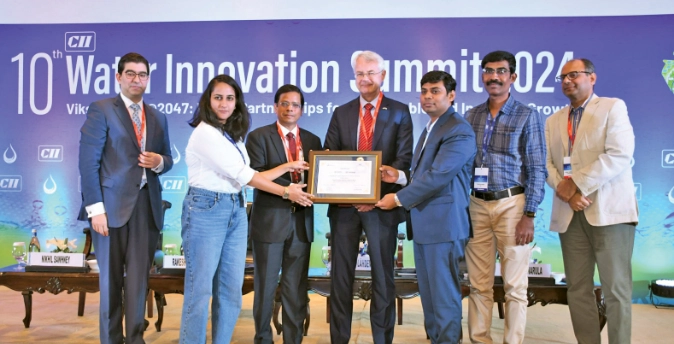
Water and wastewater management
Hindustan Zinc Limited (HZL)
Rajpura Dariba Complex became the first Vedanta plant to receive NITI Aayog’s Scope 1 Water Positivity Aspiring Company certification, enhancing brand image, strengthening water stewardship, and achieving key milestones like watershed assessment, water audit, gap analysis, and source mapping.
NITI Aayog published new guidelines for Water Positivity in Indian industries in November 2023. These guidelines introduced three certification schemes with a newly designed approach, making it the most comprehensive national-level certification in India. Many of Vedanta’s Indian peers have already initiated this certification process.
This recognises RDC’s commitment to responsible water management, aligning with national priorities set by NITI Aayog.
The team at Rajpura Dariba Complex (RDC) took the initiative to obtain this valuable certification at the RDC level, becoming the first plant, not only in Hindustan Zinc Limited (HZL) but across Vedanta, to successfully complete the process and acquire the Scope 1 Water Positivity Aspiring Certification.
The certification enhances stakeholder trust by showcasing leadership in water stewardship, attracting ESG-focussed investors, boosting employee morale and strengthening community relations. It sets a sustainability benchmark for industry peers and fosters positive regulatory engagement.
Rising extraction costs, stricter regulations, community conflicts, and lagging innovation threaten profitability, efficiency, reputation, and regulatory compliance.
At Vedanta, we recognise the pivotal role the metals and mining sector plays in transitioning to a low-carbon future and fostering a green economy. Our commitment is driven by continuous innovation and the integration of technologies that enhance operational and energy efficiency, while significantly reducing our carbon footprint. By embedding circularity into our processes, we are dedicated to delivering on our promise of sustainable growth and environmental stewardship. This approach aligns with our broader vision of transforming the workplace, communities, and the planet through comprehensive environmental, social, and corporate governance practice. Under this aim we cover material issues like: Waste Management, Tailings Management, Air Emissions and Quality, Biodiversity and Ecosystem. Vedanta follows stringent waste management guided by its Resource Use and Waste Management Standard, prioritising reduction, recovery, and recycling. Hazardous and HVLT wastes are safely handled, with aims for 100% utilisation by 2035. Advanced monitoring ensures tailings safety, while biodiversity is protected through a “Do No Harm” approach, aligning with global standards to mitigate environmental impact. Vedanta employs advanced data tracking systems like Enablon to monitor waste, air quality, and biodiversity across all operations. Waste is categorised and monitored regularly, with audits supporting "waste to wealth" goals and a 100% HVLT and fly ash utilisation target by 2035. Air quality is tracked using CEMS and ambient stations, ensuring compliance and emission reduction. Biodiversity is managed via IBAT-based risk assessments, tailored site plans, and stakeholder engagement. Regular reporting ensures accountability and supports Vedanta’s sustainability and environmental stewardship goals.
The ESG Board Sub-Committee oversees performance, while The Biodiversity COP and the Waste to Wealth COP help implement the respective roadmaps associated with this aim across business and operational levels.
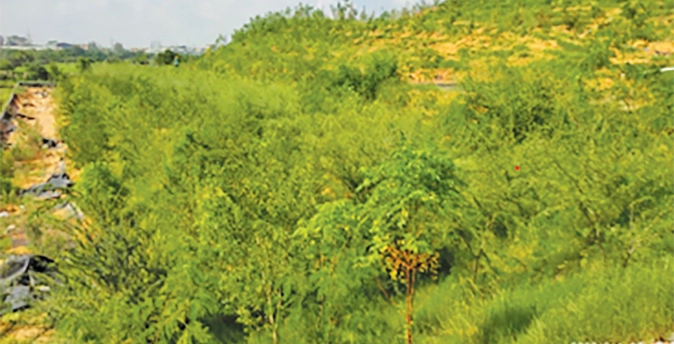
Materials management
HZL
The project helps reduce the environmental footprint of waste by repurposing jarofix for road and railway embankment construction. It minimises storage issues and soil damage while improving resource utilisation within the site.
The project repurposes jarofix for railway embankment construction, which improves soil strength and minimises the likelihood of failure. It has resulted in the use of 70,942 tonnes of jarofix in the past six months.
The project addresses the issue of large quantities of jarofix waste generated by the zinc production process, reducing environmental harm and optimising waste management practices. It ensures sustainable waste utilisation, contributing to environmental protection.
The jarofix is utilised in construction projects, especially in railway embankments, where it enhances soil stability. This approach reduces the environmental impact of waste storage and helps Vedanta in minimising its ecological footprint.
This initiative reduces the environmental impact on local communities by preventing leachate seepage into the soil. It also contributes to the development of infrastructure, providing benefits to local areas.
Tailings Management
Hindustan Zinc Limited (HZL)
The adoption of Dry Tailing and Paste Fill Technology enhances HZL's mine safety and reduces environmental footprint, aligning with Vedanta's commitment to sustainable mining practices. It also improves resource utilisation and reduces the need for surface tailings disposal.
The project uses Dry Tailing and Paste Fill Technology to reduce the need for surface tailings disposal, recover over 80% of water from tailings, and improve mine safety by backfilling underground mines with a solid material that prevents cave-ins.
The project mitigates the environmental hazards associated with traditional wet tailings disposal, such as dam failures and soil contamination. It also improves the safety of mining operations and conserves water, making it crucial for both environmental sustainability and operational efficiency.
HZL has invested in a Dry Tailing Plant and Paste Fill Technology, which backfills underground mines with a dry filter cake mix. The project is ongoing, with a target to recover approximately 1,000 m³ of water per day and significantly reduce the environmental footprint.
This initiative ensures enhanced safety for local communities by reducing the risks associated with conventional wet tailings. It also helps conserve water resources, benefiting the local environment and communities by reducing contamination and promoting sustainable resource management.